A report assignment example shows you how to organize information, analyze data, and present findings in a clear format. You need a structured approach because it improves the clarity and professionalism of your report. Instructors notice when you use consistent formatting and clear headings:
- Over 75% of instructors say well-formatted reports are easier to read and receive better evaluations.
- Students in Malaysia who follow formatting guidelines get better feedback and higher grades.
- Revising a report to include headings and proper citations leads to improved readability.
A structured report also supports deeper learning. The table below illustrates how a quality-focused approach benefits students in Malaysia at every level:
| Measure | First-Year Students Correlation | Senior Students Correlation |
|---|---|---|
| Writing Quantity and Deep Learning | 0.15 to 0.27 | 0.11 to 0.22 |
| Effective Writing Interventions and Deep Learning | 0.20 to 0.42 | 0.19 to 0.41 |
| Additional Variance in Learning Gains Explained by Effective Writing Practices | ~5% | N/A |
You can master report writing by following a step-by-step guide. This guide will help you plan, structure, and complete your report using practical tips and tools like FineReport. With the right approach, you will meet assignment requirements and create a professional report.
Key Takeaways
- Plan your report carefully by understanding the assignment, audience, and purpose to stay focused and organized.
- Use a clear structure with sections like title page, introduction, methodology, main body, and conclusion to present your ideas logically.
- Choose reliable sources and take detailed notes to support your analysis and build credibility.
- Format your report professionally with consistent fonts, headings, and citations to improve readability and impress your readers.
- Always proofread and revise your report to catch errors and ensure clarity before submission.
Understanding Report Assignment Example
Assignment Brief
When you start a report assignment example, you first need to understand the assignment brief. The brief acts as your roadmap. It outlines what sections you must include, such as the title, executive summary, context, alternatives, recommendations, appendices, and sources. Each section serves a specific purpose and helps you organize your information logically.
- The assignment brief often asks you to clearly define the problem or topic.
- You must present the issue in a way that guides the reader directly to your main points.
- The brief expects you to answer key questions, such as "What is the problem?" and "What is the scope of the problem?"
- Every detail you include should connect back to the main issue, keeping your report in Malaysia focused and relevant.
Tip: Always review the assignment brief before you begin writing. This step ensures you meet all requirements and avoid missing important sections.
A well-structured report assignment example helps you develop investigative and analytical skills. You learn to examine issues, provide accurate information, and support decision-making in Malaysia. Reports also serve as official records, helping you maintain accountability and transparency in Malaysia.
Purpose and Audience
A report assignment example always has a clear purpose. You might need to summarize, analyze, synthesize, or evaluate information. Recognizing these verbs in your assignment helps you understand what your instructor expects. Your report should present facts, not opinions, and use reliable sources to support your statements in Malaysia.
You must also consider your audience in Malaysia. Think about who will read your report. Are they experts, classmates, or someone new to the topic? Adjust your language, tone, and structure to match their needs. For example, formal reports often include data, visuals, and citations, while informal reports may look more like essays.
Research shows that understanding your audience’s knowledge level and expectations in Malaysia helps you communicate more effectively. When you tailor your report to your audience in Malaysia, you make your writing clearer and more engaging. The structured format of a report assignment example, with headings and subheadings, helps you organize information and meet your readers’ needs.
Note: Writing a report assignment example teaches you to plan carefully, reduce bias, and follow academic standards. These skills are valuable in both academic and professional settings.
Guide on How to Write a Report
Planning
You set the foundation for a successful report when you plan carefully. Begin by reviewing your assignment instructions and learning objectives. This step ensures you understand what your instructor expects in Malaysia and helps you align your work with the assessment criteria. Many students in Malaysia find it helpful to attend academic skills workshops or meet with tutors to clarify assignment requirements and build essential writing skills.
You should always choose a topic that fits the assignment and offers enough information for research. Select reputable sources, such as official documents, research papers, and books. This approach strengthens your report and builds credibility. As you gather information, take notes and organize your findings by theme or section. Good note-taking helps you identify gaps in your research and keeps your ideas focused.
Tip: Schedule your work in stages. Break the assignment into smaller tasks, such as research, outlining, drafting, and revising. This method reduces stress and helps you manage your time effectively.
Effective planning also means understanding your audience in Malaysia and the type of report you need to write. Business, scientific, and technical reports each have unique structures. Tailor your content and format to match the expectations of your readers. When you plan with your audience in Malaysia in mind, you create a more engaging and relevant report.
To prepare for writing, try these strategies:
- Align your assignment with the main learning objectives.
- Define the purpose, audience, and genre of your report.
- Design your report around real scenarios or problem-solving questions.
- Use templates or schemas to organize your ideas, but allow room for creativity.
- Segment longer assignments into smaller parts to make progress manageable.
These planning steps form the backbone of any guide on how to write a report. They help you stay organized and focused from the start.
Outlining
An outline acts as your roadmap for the entire report. You use it to organize your thoughts, structure your sections, and ensure nothing important gets left out. Many experienced writers rely on outlines to keep their work clear and logical.
Start by reviewing your research and notes. Identify the main issues, stakeholders, and events related to your topic. Distinguish between symptoms and root causes if you are analyzing a problem. This process helps you decide what information belongs in each section of your report.
A strong outline for a report usually includes:
- Title page
- Table of contents
- Executive summary
- Introduction
- Methodology
- Main body (with headings and subheadings)
- Conclusion
- References
- Appendices
Each section serves a specific purpose. For example, the introduction gives an overview of the main facts and issues, while the methodology explains how you gathered your data. The main body presents your analysis, and the conclusion summarizes your findings and recommendations.
Note: Use headings and subheadings to divide your report into clear sections. This structure makes your writing easier to follow and helps readers find information quickly.
When you outline, you also decide the order of your arguments and evidence. This step ensures your report flows logically from one point to the next. If you are working on a case study, your outline might include a problem statement, background, goals, solutions, results, and a call to action. This approach supports thorough analysis and effective communication.
Follow these steps for writing a report:
- Review your topic and gather information.
- Write a clear thesis statement.
- Prepare an outline with headings and subheadings.
- Draft your report section by section.
- Revise and edit for clarity and accuracy.
- Proofread to correct grammar and spelling errors.
A well-structured outline saves time during drafting and revision. It also helps you meet assignment guidelines and produce a professional, effective report. By following a step-by-step guide, you ensure your report writing essentials are covered and your final product meets high standards.
Research and Data Collection
Sources
You need to choose your sources carefully when working on a report or project. Start by identifying all the places where you can find reliable data. These might include books, academic journals, official websites, interviews, and databases. Using a variety of sources helps you build a stronger report and gives your project more depth.
- AI-powered tools can help you collect and analyze data from many sources, making your research process faster and more accurate.
- Visualization platforms like FineReport and FineBI turn complex data into clear charts and dashboards, which makes your report easier to understand.
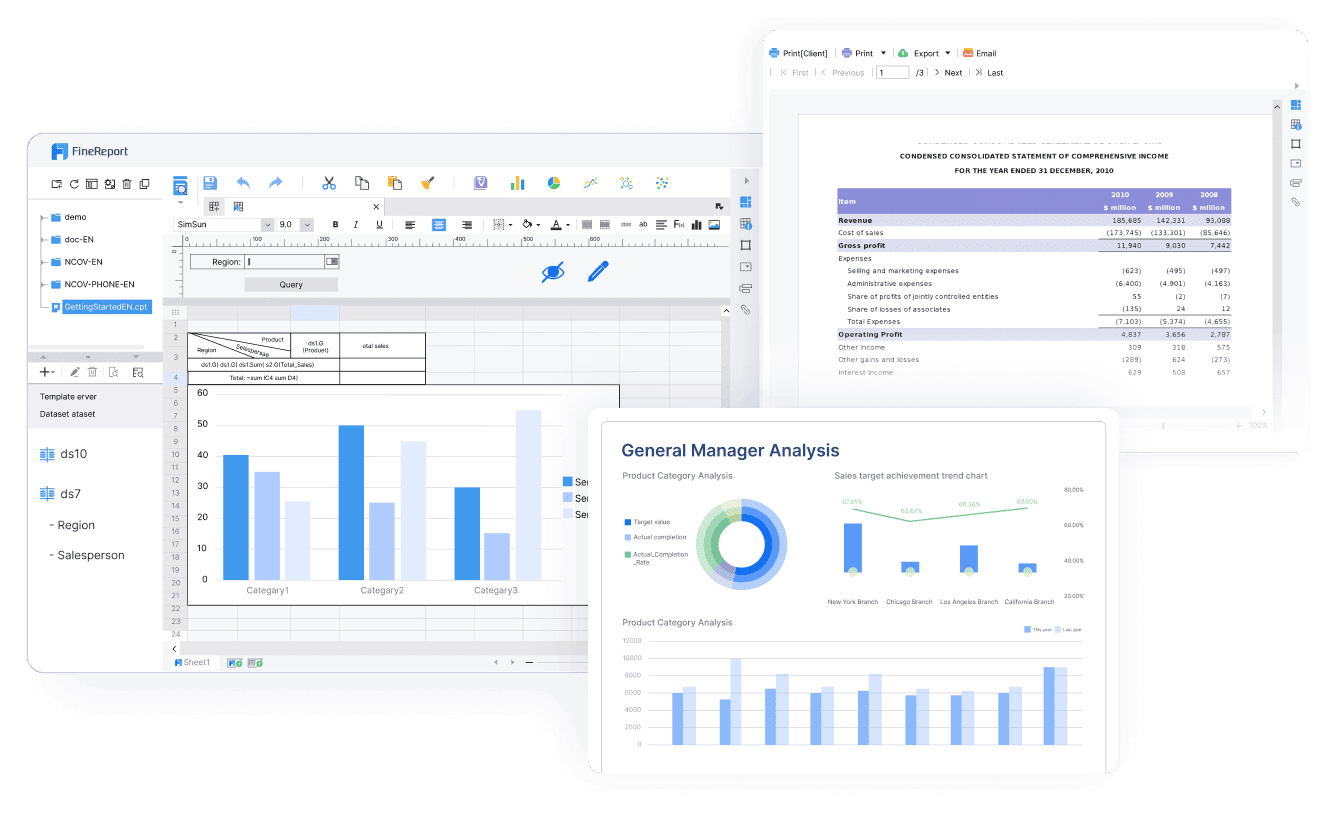
- ETL tools clean and merge data, solving problems with data silos and inconsistent formats.
- Real-time data processing tools allow you to keep your report up to date with the latest information.
- Security-focused platforms protect your data and help you follow privacy rules.
Managing data from different sources can be challenging. You must handle large amounts of information, different formats, and make sure your data is accurate. Centralizing your data and using integration tools can help you keep everything organized. Automation and visualization tools also make your report more insightful and easier to share with others.
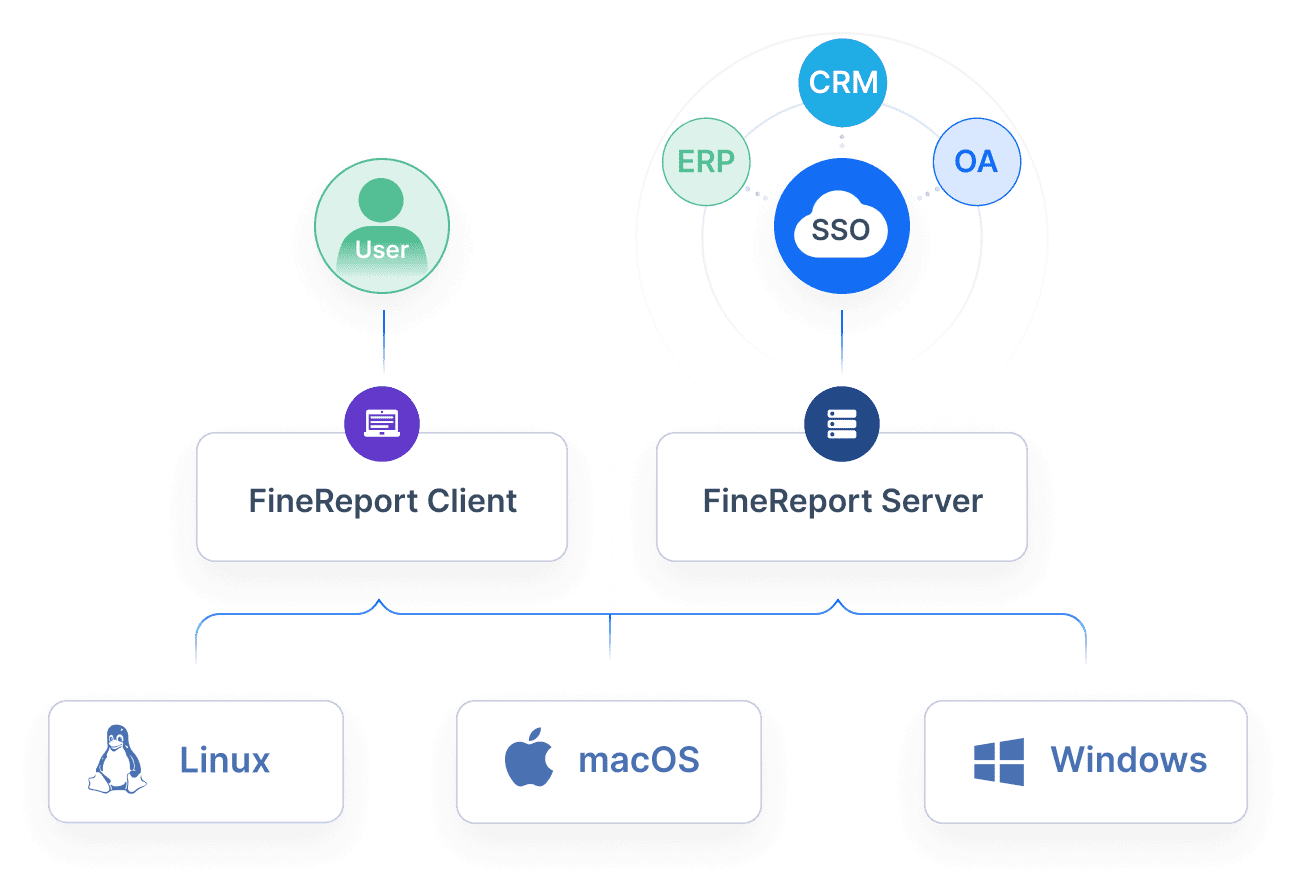
Tip: For every project, identify and catalog all your data sources before you start writing. This step helps you understand what you have and what you still need to gather.
Note-Taking
Effective note-taking is a key part of any successful report or project. You should record full details about each source, write down important claims, and add your own thoughts. This method keeps your notes organized and makes it easier to connect ideas as you write your report.
Systematic note-taking helps you track your research and supports critical thinking. When you review your notes often, you remember more and understand the material better. Studies show that students in Malaysia who take more notes and review them regularly perform better on tests and produce higher-quality reports. Your notes act as a storage space for your ideas, making it easier to build a strong project.
You can use digital tools to organize your notes, search for key points, and link related ideas. This approach saves time and ensures you do not miss important information when you write your report.
Report Assignment Example Structure
A clear assignment report format helps you organize your ideas and present your findings in a logical way. You need to follow a standardized structure of a report to ensure your work is easy to read and meets academic or business standards. Many organizations and instructors recommend a consistent format of a report because it improves clarity, supports decision-making, and saves time for readers. Below, you will find a sample structure and practical tips for each section. You will also learn how FineReport can help you automate and format these sections for any scenario.
Title Page
The title page is the first impression of your report. You should include the report title, your name, the date, and any relevant course or project information. This section sets the tone and provides essential details for identification.
Tip: FineReport allows you to create customizable templates for title pages, ensuring your assignment report format always looks professional and consistent.
Table of Contents
The table of contents lists all the main sections and page numbers. This feature helps readers quickly find the information they need. For longer reports, a table of contents is essential for navigation.
- FineReport can automatically generate a table of contents based on your headings, saving you time and reducing errors.
Executive Summary
The executive summary gives a brief overview of the entire report. You summarize the main findings, conclusions, and recommendations. Decision-makers often read only this section to understand the key points.
- Research shows that executive summaries break down complex reports into concise, readable formats. They allow busy readers to grasp the main ideas without reading the full document.
- You should keep this section short—usually one page or less—and use clear, formal language.
| Component | Description |
|---|---|
| Findings | Summarize important discoveries and concerns. |
| Conclusions | Present actionable plans and suggestions. |
| Length | Should not exceed one page. |
| Purpose | Help readers digest key information quickly. |
FineReport supports the creation of executive summaries by letting you pull key metrics and visuals directly into this section.
Introduction
The introduction sets the context for your report assignment example. You explain the background, define the problem, and outline the objectives. This section helps readers understand why the report matters.
- You should state the purpose and scope clearly.
- FineReport enables you to embed background data and visuals, making your introduction more engaging.
Methodology
In the methodology section, you describe how you collected and analyzed your data. You explain your research methods, tools, and processes. This section ensures transparency and allows others to replicate your work.
- Best practices suggest you conduct background research, design surveys, and document all steps.
- FineReport can automate data collection and analysis, making it easier to document your process and present results.
Main Body
The main body contains your analysis, findings, and discussion. You organize this section with headings and subheadings, presenting evidence and arguments in a logical order. Each part should connect back to your objectives.
- Use visuals, tables, and charts to support your points.
- FineReport excels at integrating data from multiple sources and generating dynamic visuals for your main body.
Writing Sections
Introduction Section
You begin your report with a strong introduction. This section sets the stage by outlining the topic and previewing the main points. A clear introduction helps readers understand the purpose and scope of your work. When you organize your introduction well, you make it easier for your audience in Malaysia to follow your logic. Use this section to explain why the topic matters and what you plan to achieve. Many writing guide resources recommend starting with a brief overview and then stating your objectives. This approach supports effective report writing and ensures your readers know what to expect.
Methods and Results
In the methods section, you describe how you gathered and analyzed your data. You should explain your research process, tools, and any steps you took to ensure accuracy. This transparency allows others to trust your findings. The results section follows, where you present your data clearly. Use tables, charts, or visuals to make complex information easy to understand. Each part of your report serves a specific role in organizing information logically. For example, the methodology explains your research methods, while the findings present data in a way that supports your conclusions. This structure helps readers evaluate your work and understand your results. For example, FineReport uses dynamic charts and dashboards to created a report showing the overall sales condition.
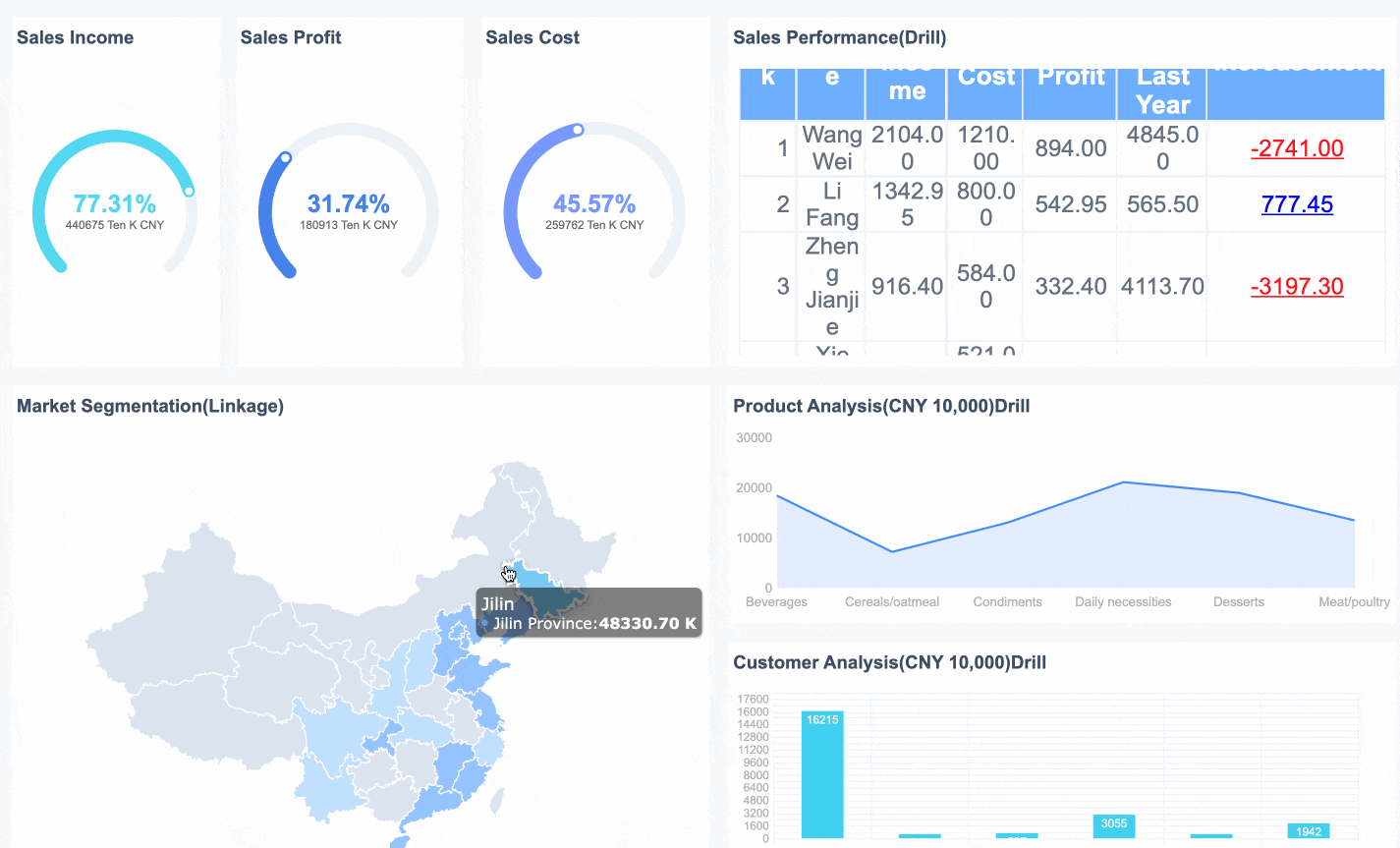
Analysis and Discussion
You move to the analysis and discussion section after presenting your results. Here, you interpret your findings and connect them to your objectives. Use clear headers and organize your ideas by theme. This approach improves readability and helps your audience in Malaysia see the logic behind your conclusions. Studies show that detailed and well-structured analysis sections enhance report quality. When you discuss your results, explain what they mean and why they matter. Use examples or quotes if needed. A logical flow and cohesive narrative make your report more credible and easier to follow.
Summary and Recommendations
You finish your report with a summary and recommendations. The summary restates the key findings and main messages. Recommendations provide actionable steps based on your analysis. Clear and concise summaries help readers remember the most important points. Well-founded recommendations guide decision-makers and support real-world action. Many organizations use structured templates with bottom line statements to make reports more user-friendly. Feedback from end users highlights the value of concise, transparent, and relevant reports. When you follow these steps for writing a report, you create documents that are both useful and easy to implement.
Tip: Always write the first draft with clarity in mind. Use simple language and organize your sections logically. This method ensures your report is effective and professional.
Formatting Your Report
Formatting your report correctly ensures your work looks professional and is easy to read. Following established guidelines helps you present your findings clearly and makes a strong impression on your audience in Malaysia.
Fonts and Spacing
Choosing the right font and spacing is essential for a polished report. Use familiar fonts such as Times New Roman, Arial, or Calibri in 12-point size. These fonts are easy to read and accepted in both academic and business settings. Avoid using default or exotic fonts, as they can reduce readability and may not display well on all devices.
- Set your line spacing to 1.5 or double. This spacing improves readability and allows room for comments or notes.
- Keep margins at 1 inch on all sides to create balanced white space.
- Indent paragraphs by half an inch or separate them with a blank line.
Tip: Left-align your text for the main body. This alignment prevents uneven spacing and keeps your report looking clean.
These formatting choices help you maintain a unified appearance and make your report accessible to all readers.
Headings and Styles
Headings organize your report and guide readers through each section. Apply a clear typographic hierarchy with at least three levels: main headers, subheaders, and paragraph text. Use larger, bold fonts for main headings and smaller, less stylized fonts for subheadings. This structure helps readers quickly find information.
- Make headings stand out by using bold or increased font size.
- Write headings that are accurate and concise.
- Group related content together and use whitespace to separate sections.
- Keep your formatting consistent throughout the report.
A logical organization of headings and sections improves navigation and highlights key insights. For longer reports, consider using style sheets to ensure uniformity, especially if multiple people contribute to the document.
Citations
Citations give credit to your sources and uphold academic integrity. Always use a consistent citation style, such as APA, MLA, or Chicago, as required by your instructor or organization. Proper citation builds credibility and allows readers to verify your information.
- Evaluate your sources for credibility by checking the author, publication, and date.
- Use citation management tools like Zotero or EndNote to organize your references.
- List all sources in a dedicated references section at the end of your report.
Note: Accurate citations prevent plagiarism and show respect for others’ work. They are a key part of the format of a report and reflect your attention to detail.
By following these guidelines, you ensure your report meets professional standards and is easy to navigate.
Reviewing and Editing
Proofreading
You should always set aside time to proofread your report before submission. Start by separating proofreading from editing. Focus on one type of error at a time, such as grammar, punctuation, or spelling. Many students in Malaysia find that reading the report aloud helps catch awkward phrasing and unclear sentences. Try reading each sentence slowly or even backwards to spot mistakes you might miss when reading quickly.
Digital tools like spell checkers, grammar checkers, and readability checkers can help you identify common errors. However, do not rely only on these tools. Manual proofreading remains the most effective way to catch subtle mistakes. Use style guides and dictionaries to ensure you follow the correct conventions. Take breaks between editing sessions to keep your mind fresh and focused.
Professional editors recommend developing a systematic proofreading strategy. For example, you can use the CROP method: check for Consistency, Relevance, Organization, and Presentation. This approach improves the clarity and professionalism of your report. Research shows that detailed proofreading practices, such as targeted error correction and reading in short blocks of time, reduce errors and improve writing quality.
Final Checklist
Before you submit your report, use a checklist to make sure you have covered every requirement. Review your document for structure, clarity, and accuracy. Confirm that you have included all sections, such as the introduction, methodology, and conclusion. Check your citations and references for completeness and correctness.
Ask a peer or mentor to review your report. Fresh eyes can spot errors you might overlook. Feedback from others often leads to valuable improvements. If possible, use FineReport’s built-in features to automate formatting and ensure consistency across your document. FineReport can help you generate professional layouts, organize data, and maintain a high standard of presentation.
Remember, a thorough review and redraft process transforms your work from a draft into a polished, professional report. By following these steps, you ensure your report meets academic and business standards.
Report Assignment Example Outline
Sample Mini-Report
You can use a structured outline to guide your report writing and make your project more effective. A clear outline helps you organize your ideas, manage your time, and ensure you cover every requirement. Below is a sample mini-report outline you can adapt for your next project:
- Title Page
Include the project title, your name, date, and any relevant course or organization details. - Table of Contents
List each section and its page number for easy navigation. - Executive Summary
Summarize the main findings, conclusions, and recommendations of your project in a short paragraph. - Introduction
Present the background, purpose, and objectives of your project. State why the topic matters. - Methodology
Describe how you collected and analyzed data for your project. Mention any tools or resources you used. - Main Body
Organize your analysis and findings into logical sections. Use headings and visuals to support your points. - Conclusion
Restate the key results and what they mean for your project. Suggest next steps or recommendations. - References
List all sources you used in your project, following the required citation style. - Appendices
Attach any extra data, charts, or supporting materials.
Tip: Using a structured outline like this helps you stay focused and makes your report easier to read. Many professionals use templates to save time and ensure consistency across projects.
You can also choose a template that fits your project needs. The table below shows different templates and when to use them:
| Template Type | When to Use | Notable Features |
|---|---|---|
| In-depth Case Study Template | For detailed marketing case analysis by managers needing comprehensive data and findings. | Comprehensive structure allowing detailed data presentation, analysis, and discussion for professional reports. |
| Data-Driven Case Study | To highlight measurable outcomes and analytics, ideal for marketers and analysts. | Emphasizes data visualization with graphs, charts, and tables to present complex data clearly and engagingly. |
| Marketing Case Study | To showcase marketing strategies, campaigns, and their results, suited for marketing teams. | Focuses on storytelling aspects, structuring company details, challenges, and solutions with sample data. |
For example, in markrting analysis, FineReport Emphasizes data visualization with graphs, charts, and tables to present complex data clearly and engagingly.
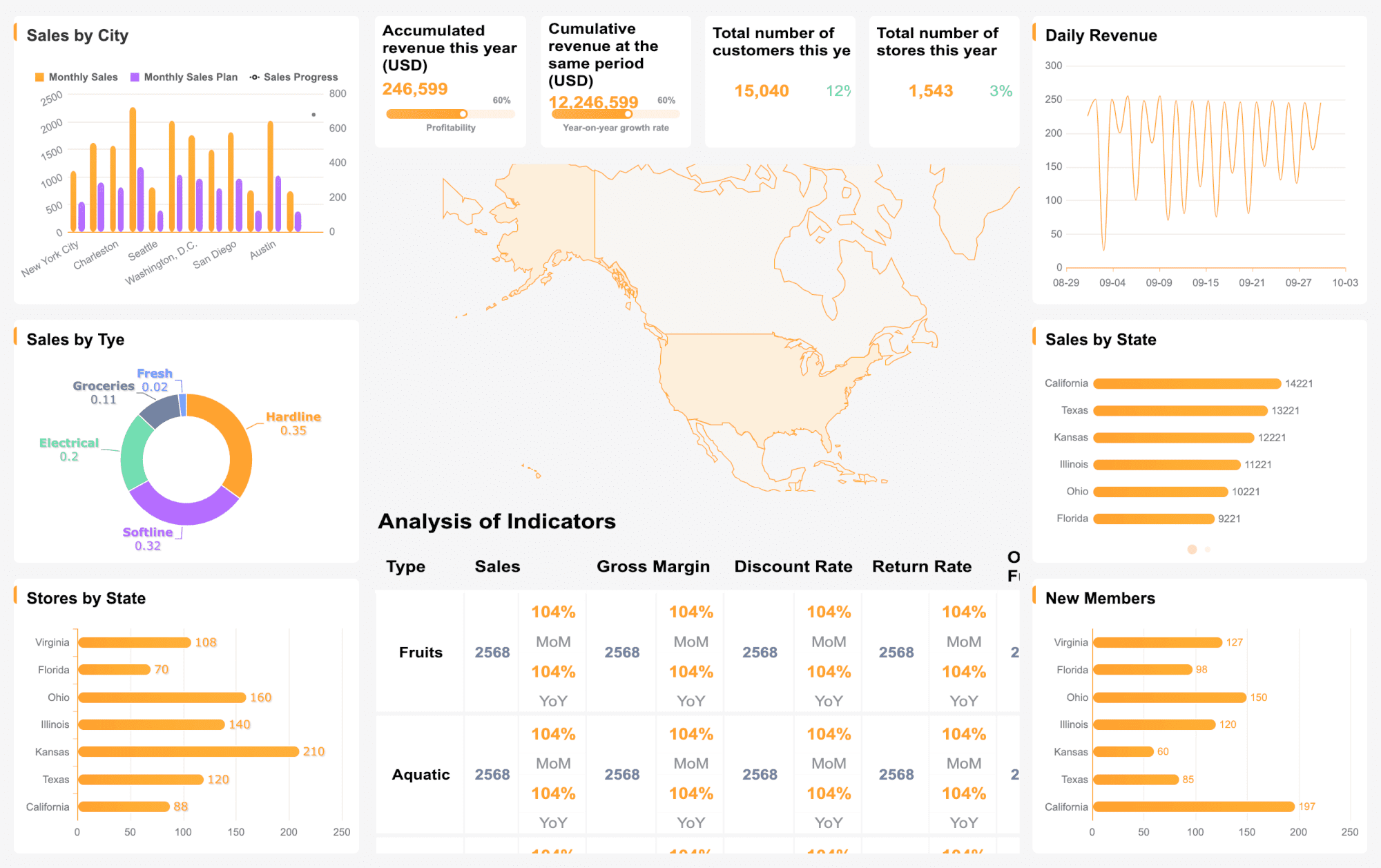
A strong outline gives your project a clear path from start to finish. You will find it easier to manage your research, draft your report, and present your findings with confidence.
You can create a strong report by following a clear guide and using structured steps. Well-structured conclusions help you:
- Summarize findings so readers understand the main points.
- Explain why your research matters and what it means.
- Use simple language to make your message clear.
- Offer practical recommendations for action.
- Align your report’s sections and reinforce your purpose.
FineReport makes it easy to format, organize, and review your work. Apply this guide to your next assignment for better results. For more advanced reporting and analytics, explore the resources from FanRuan.
Click the banner below to try FineReport for free and empower your enterprise to transform data into productivity!
Continue Reading About Report Assignment
Free Daily Report Template – Streamline Reporting Fast
Empower Your Business: Best Financial Reporting Tools 2025
A Beginner’s Guide to Financial Report: Definition, Types, Tools & Templates
FAQ

The Author
Lewis
Senior Data Analyst at FanRuan
Related Articles

What is integrated reporting and why is it important
Integrated reporting combines financial and non-financial data, offering a full view of value creation, transparency, and stakeholder trust.
Lewis
Dec 12, 2025

What Is a Weekly Sales Report and Why Does It Matter
A weekly sales report tracks sales data, highlights trends, and guides decisions. See key components and benefits of weekly sales reports for your team.
Lewis
Dec 11, 2025
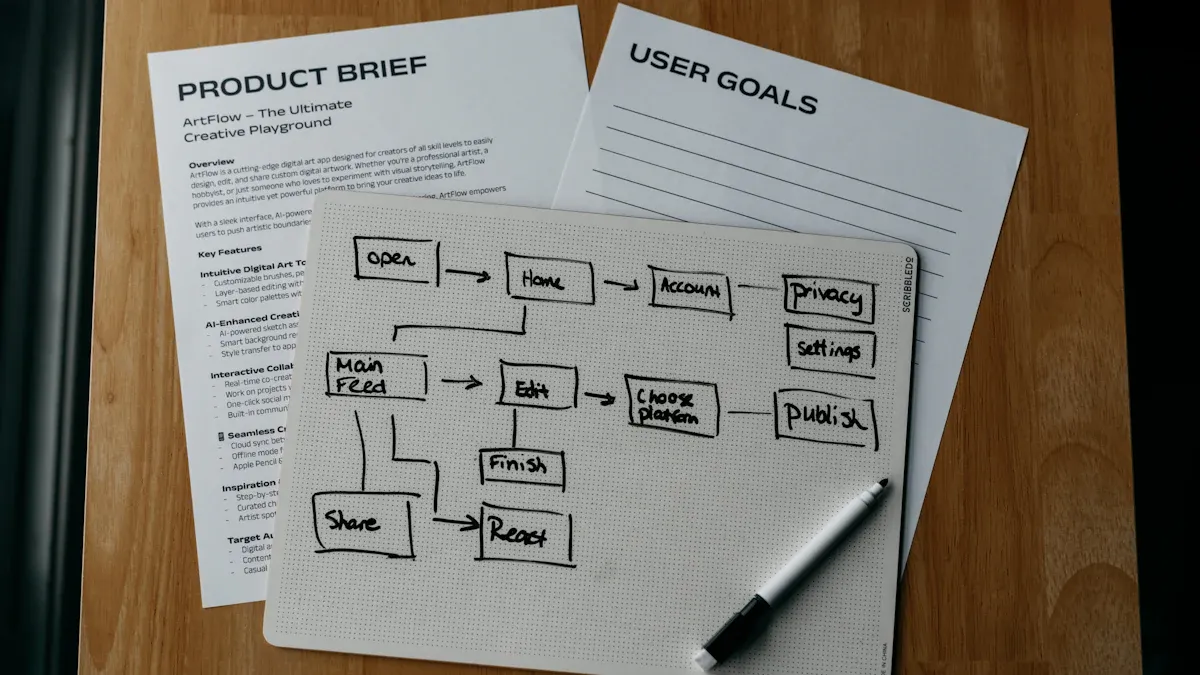
Top 9 Best Reporting Tools for ASP.NET Developers
Compare the top 9 best reporting tool for asp net projects in 2026. Find features, integration, and export options for ASP.NET and ASP.NET Core apps.
Lewis
Dec 10, 2025




